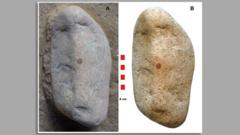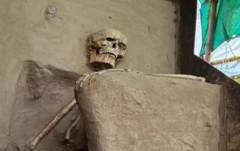An intriguing find in Thessaloniki has come to light, as a statue dating back to the Hellenistic period was discovered discarded in a plastic bag among trash bins. The 31-inch statue, found on January 18 by a local man, depicts a female figure robed in a draped garment, prompting an investigation by Greek authorities into its origins. The Ministry of Culture has recognized the artifact as protected under Greek law, forwarding the examination to a specialized panel to ascertain its composition and dating.
Ancient Artifact Discovered in Thessaloniki Trash Invites Investigation

Ancient Artifact Discovered in Thessaloniki Trash Invites Investigation
A headless statue believed to be over 2,000 years old has sparked an inquiry into antiquities trafficking in Greece.
The police's announcement on January 22, 2025, highlights the statue’s significant historical value, reportedly originating from 323 B.C. to 31 B.C., the era following Alexander the Great's death. Initial analyses suggest that the statue may represent a deity, given its small size and the style of dress. Dr. Bert Smith, a classical archaeology expert, elaborated on the figure’s significance in terms of ancient practices, noting that such votive offerings were commonly presented to divinities in temples in gratitude for divine favors.
The find underscores a recurring phenomenon within Greece, where ancient artifacts often emerge unexpectedly, particularly during construction activities. The statue’s head and arms remain missing, but experts believe that their absence may hold important information regarding the figure's original pose and cultural significance, serving as a reminder of the region's profound and rich historical lineage.
The find underscores a recurring phenomenon within Greece, where ancient artifacts often emerge unexpectedly, particularly during construction activities. The statue’s head and arms remain missing, but experts believe that their absence may hold important information regarding the figure's original pose and cultural significance, serving as a reminder of the region's profound and rich historical lineage.



















